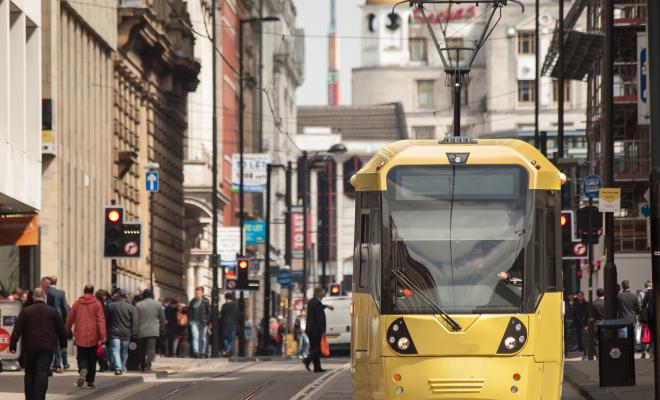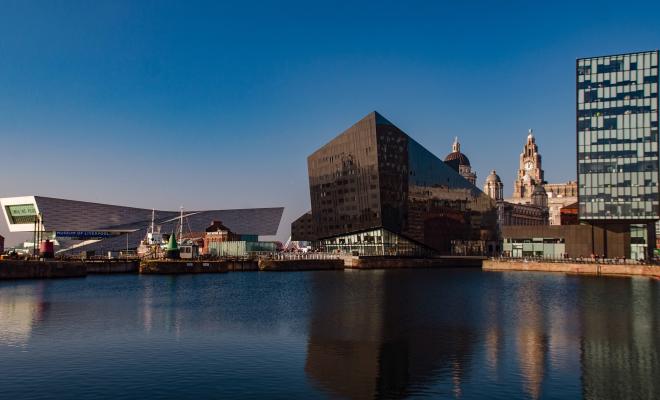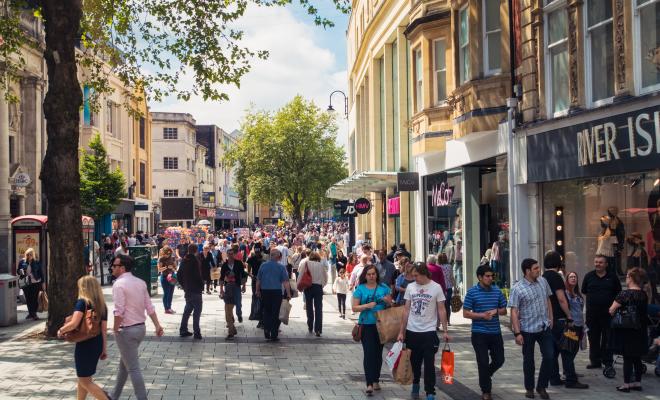20 Sep 2024
How is Action 41 tackling the climate crisis?
Sub-national Transport Bodies are organisations that coordinate transport investment and set the strategic direction across an entire region. England’s Economic Heartland, which covers parts of East Anglia and South East England, is driving improvements in more sustainable travel.
There are seven Sub-National Transport bodies covering the entirety of England outside of London. All but one are non-statutory – statutory status can be granted via legislation. Each body’s remit, governance and size are different, reflecting the priorities of the regions they serve. However, they bring together stakeholders including local and combined authorities, the Department for Transport, Local Enterprise Partnerships, National Highways, Network Rail and many more to discuss and decide what needs to happen on transport in the region. England’s Economic Heartland’s members are its local authorities, the leaders of which sit on its governing board, which is open to the public with meeting papers published online.
England’s Economic Heartland covers:
- Bedford
- Buckinghamshire
- Cambridgeshire
- Central Bedfordshire
- Hertfordshire
- Luton
- Milton Keynes
- North Northamptonshire
- Oxfordshire
- Peterborough
- Swindon
- West Northamptonshire
England’s Economic Heartland is currently chaired by Councillor Richard Wenham, leader of Central Bedfordshire. Its accountable body is Buckinghamshire Council.
Sub-national Transport Bodies are a step between local and national governance; the scale at which they can coordinate transport governance will be essential to decarbonise the UK – especially as the transport sector is the largest source of greenhouse gas emissions in the UK (at 28% of total emissions).
Local authorities (and their residents) in England can use their influence as members of Sub-national Transport Bodies to align the region’s transport strategy with climate targets. Transport for the North, for example, did not take proper account of climate change until intervention from local campaigners successfully changed its approach. England’s Economic Heartland has started out strong by including the climate emergency as a key consideration at the centre of its initial strategy.
The challenge for England’s Economic Heartland
This region is wealthy (though with pockets of significant deprivation) and with 35% of people/households living in small market towns or rural communities, car use is higher than the national average. Between 2012 and 2017, transport-related carbon dioxide (CO2) emissions rose by 10% in the region compared to 5% nationally. In 2017, transport emissions equated to 47% of the region’s total CO2 emissions, in contrast to 37% nationally.
A decarbonisation transport strategy
In February 2021, recognising that travel trends were incompatible with climate targets England’s Economic Heartland adopted a transport strategy with a vision of a world-class decarbonised transport system.
The strategy has an ambition for the region’s transport system to be net zero by 2040 and aims to reduce private vehicle journeys by 5% every decade, a target that will be revisited in the future. The strategy states that decarbonisation will be achieved by "prioritising investment not just on the basis of value for money, but for its contribution towards achieving net zero, as well as wider sustainability and environment goals".
The strategy sets out a clear travel hierarchy with active travel (cycling and walking) as the first priority closely followed by enabling access to services without the need for motorised travel, and then public transport.
A centrepiece of the strategy is the new East West Rail route between Oxford and Cambridge. This railway line has been a major strategic priority in the region for over 25 years, and England’s Economic Heartland is working with the Department for Transport and East West Railway Company to ensure its potential to act as the catalyst for transforming the wider transport network is realised. Another key element of the strategy is support for mass rapid transit systems, such as the metro, in places such as Milton Keynes.
The strategy also features a strong focus on better digital infrastructure, to better plan journeys through the use of intelligent transport systems, journey planning technologies or removing the need to travel at all by enabling remote working. Parallel decarbonisation of the road fleet (through electrification and improving public transport to disincentivise short car journeys under 5 miles) and rail network are also on the agenda. England’s Economic Heartland recognises that switching to electric vehicles is only part of the solution, hence its focus on reducing car travel overall via the promotion of active travel and public transport options.
What impact has this had?
The partnership’s strategy was published in February 2021 without the inclusion of any specific carbon budgeting measures, as the body waited for two key relevant announcements by the government. The first of these in April 2021 was the UK’s Sixth Carbon Budget setting out the cuts that need to be made in greenhouse gas emissions for 2033-2037. The second, in July 2021, was the Department of Transport’s report "Decarbonising Transport: A Better, Greener Britain", which explains how the transport sector will be brought into line with the Sixth Carbon Budget.
Now with a clearer national direction as a foundation, England’s Economic Heartland is developing its own roadmap for delivery of its strategy, including the translation of the Fourth, Fifth and Sixth Carbon Budget trajectories into carbon budgets for transport at a local authority level, where possible and appropriate.
Due to the diverse nature of the region covering urban, suburban and rural areas, this process will identify which interventions are fitting for each of the body’s local authority areas. England’s Economic Heartland has commissioned consultants City Science to assist with the roadmap, expected in the first half of 2022. It is committed to supporting its Local Transport Authorities to deliver carbonisation.
What made this work?
When it comes to carbon governance, Sub-national Transport Bodies can be an effective regional voice, improving efficiency, streamlining strategic decisions for accelerated delivery, and creating better value for money. They are uniquely placed to work simultaneously with local and national government and have greater lobbying power with the latter than councils alone.
Better regional data and carbon budgets will make it easier to deliver more carbon reductions in a cost-effective way.
England’s Economic Heartland has strong assets including access to the region’s leading experts in clean, green and smart technology from two of the world’s foremost universities – Oxford and Cambridge. Oxfordshire, Cambridgeshire, Milton Keynes and Peterborough are already leading on electrification of public transport.
All Sub-national Transport Bodies are well placed to take advantage of a post-pandemic window of opportunity. Ingrained assumptions about travel demands, transport and working are changing in ways that can boost progress to decarbonisation.
The body works in a highly varied region, and its local authorities are diverse in terms of the resources each has available. Collaboration and shared purpose are central to the functioning and success of any Sub-national Transport Body.
What resources were needed?
The way Sub-national Transport Bodies are funded varies across England, reflecting the relative size of their budgets. England’s Economic Heartland is jointly funded by its local authorities and the Department for Transport. Department funding used to be granted on a single-year basis, but the department is now moving towards three-year funding cycles, a welcome change guaranteeing greater continuity for the work of the bodies.
England’s Economic Heartland has just one Decarbonisation Manager, but decarbonisation as a priority is threaded throughout the work of each of its teams.
Things to look out for
The role of Sub-national Transport Bodies is largely advisory. They can set carbon budgets, and improve coordination and efficiency, but the power to deliver still ultimately lies with the body’s constituent local authority members. England’s Economic Heartland is beginning to see its travel hierarchy mirrored in local authority’s updated Local Transport Plans.
However, the challenges facing Sub-national Transport Bodies will be the same as those facing local authorities, as the former cannot exist without the latter. A lack of clarity from the government, and the necessary funding, further limit action from councils that are already stretched.
Most Sub-national Transport Bodies do not have statutory status and England’s Economic Heartland is not currently pursuing this as its members do not feel this has been a barrier to its work. Some Sub-national Transport Bodies, such as Transport for the South East, have been frustrated by the lack of devolved decision-making powers and funding from the UK government, however, following the publication of the Decarbonising Transport report, the Department for Transport’s approach may change in future.
Even if more of the bodies gain statutory status, there is a question over their democratic accountability. They may feel somewhat separated from the strong grassroots input and feedback that facilitate successful climate action and may resort to relying on councils to engage their respective communities on transport issues. However, it is worth local groups engaging with these bodies, and Transport Action Network has offered to help coordinate this type of engagement.
A clearer national vision and concrete demands by government will allow local authorities and the Sub-national Transport Bodies they work through to better prioritise specific actions – for example, if the government sets a quota for the number of electric vehicle charging points per area or prioritises spending on public transport over new roads.
“Sub-national Transport Bodies’ strengths lie in working collaboratively across local and national government, the private sector, academia and interest groups. We both advise the government on the region’s priorities while supporting our local authorities to develop their approaches to the big strategic issues such as decarbonisation. Sub-national Transport Bodies, therefore, have a unique view of their regions. We're doing this job because we recognise the absolute burning requirement to decarbonise.”
James Golding-Graham, Innovation and Decarbonisation Manager at England’s Economic Heartland.
Useful information
To find out more about England’s Economic Heartland’s approach to decarbonisation, contact James Golding-Graham.
Related projects
Transport for the North has created a Transport Decarbonisation Strategy.
Friends of the Earth's view
It’s good to see the 12 councils of this regional transport body working together to achieve carbon reductions. Councils can have a bigger impact by convening others and encouraging ambition.
Decarbonising transport must work across local authority boundaries and this case study shows how working with a sub-national body can deliver a joined-up strategy. But local delivery will be vital – it’s encouraging that the aims of the strategy are being reflected in local transport plans – the real test will be if fewer people travel by car and more by public transport, cycling and walking.
National transport spending is still too focussed on new roads and not enough on buses, walking and cycling – England’s Economic Heartland will need to use its voice to influence government spending decisions.
Friends of the Earth is showcasing specific examples of good practice in tackling climate change, but that doesn’t mean we endorse everything that a council is doing.
This case study was produced by Ashden and Friends of the Earth. Any references to national policy in this case study relate to policy under the previous government and reflect the policy context in which the council was operating at the time.






